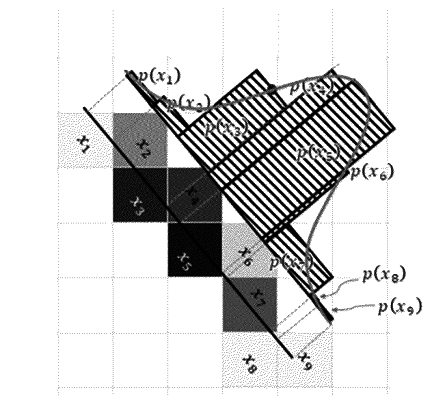| CPC B60W 60/0025 (2020.02) [B60W 30/0956 (2013.01); G01S 13/89 (2013.01); G01S 17/89 (2013.01); G05D 1/024 (2013.01); G05D 1/0257 (2013.01); B60W 2420/408 (2024.01); G06F 17/18 (2013.01)] | 11 Claims |

|
1. A method comprising:
detecting at least one object using at least one sensor associated with a vehicle;
generating data from the at least one sensor, the data including a first coordinate according to a first dimension and a second coordinate according to a second dimension in a coordinate system of the sensor having at least two dimensions;
identifying, based on the data, a segment that penetrates a subset of potentially occupied cells of an occupancy grid including a set of cells associated with respective occupancy probabilities, wherein the segment represents a distribution interval of probable values relating to a potential position of the at least one object relative to the vehicle, wherein the segment extends according to only one of the two dimensions of the coordinate system of the sensor, wherein the probable values relate to the potential position associated with probability values given by a probability density function represented by a curve having an apex corresponding to the potential position;
for each potentially occupied cell of the subset,
determining features of a segment portion included in the potentially occupied cell, and
determining a probability of occupancy of the potentially occupied cell as a function of the segment portion, based on the probability density function;
determining a position of the at least one object relative to the vehicle based on the determined probability of occupancy of each potentially occupied cell of the subset; and
automatically controlling at least one aspect of movement of the vehicle based on the determined position of the at least one object.
|